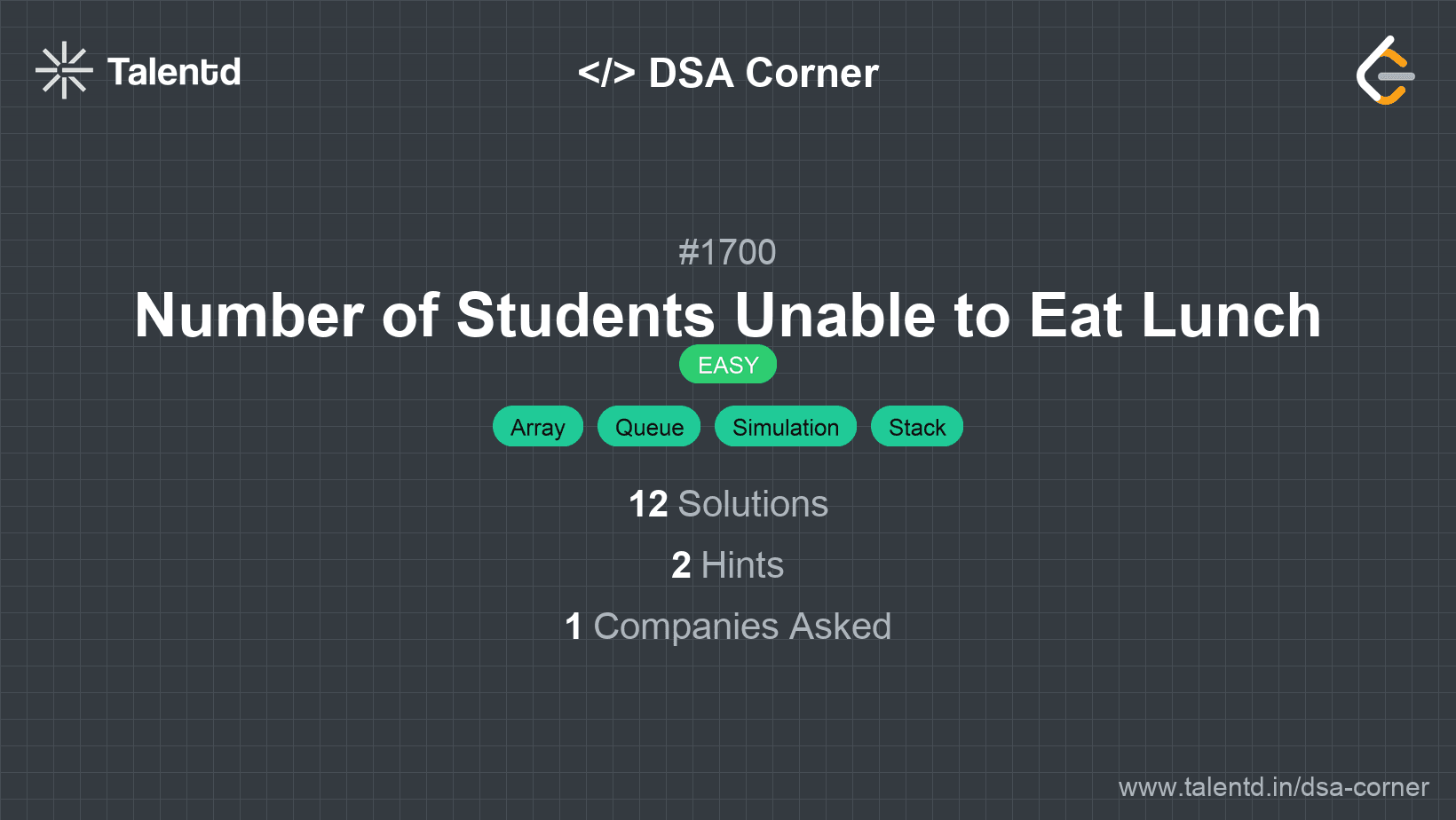
Sponsored
Sponsored
In this approach, we simulate the exact process of distributing sandwiches using a queue-like structure for the students. We repeatedly check if the student at the front of the queue can take the sandwich at the top of the stack. If not, the student is moved to the back of the queue. This continues until we complete a full cycle without any students taking a sandwich, indicating they can't eat.
Time Complexity: O(n^2) in the worst scenario because each student may be checked multiple times.
Space Complexity: O(1) since it only uses a fixed amount of extra space.
1function countStudents(students, sandwiches) {
2 let queue = students.slice();
3 let j = 0;
4 let cycle_count = 0;
5 while (queue.length > 0 && cycle_count < queue.length) {
6 if (queue[0] === sandwiches[j]) {
7 queue.shift();
8 j++;
9 cycle_count = 0;
10 } else {
11 queue.push(queue.shift());
12 cycle_count++;
13 }
14 }
15 return queue.length;
16}
17
18const students = [1, 1, 0, 0];
19const sandwiches = [0, 1, 0, 1];
20console.log(countStudents(students, sandwiches));This JavaScript solution uses arrays and in-built functions to simulate queue operations. It follows the same logic as the described approach for other languages, making use of array shifts and pushes for managing the queue state.
This approach uses counting to determine if students can satisfy their preferences before iterating over sandwiches. By counting the number of students preferring each type, we can efficiently determine how many students will be unable to eat if sandwiches of their preference run out before they can eat.
Time Complexity: O(n) because it processes each list one time.
Space Complexity: O(1) since it only uses fixed additional space for counting.
public class Solution {
public int CountStudents(int[] students, int[] sandwiches) {
int[] studentTypes = new int[2];
foreach (int student in students) {
studentTypes[student]++;
}
foreach (int sandwich in sandwiches) {
if (studentTypes[sandwich] > 0) {
studentTypes[sandwich]--;
} else {
return studentTypes[0] + studentTypes[1];
}
}
return 0;
}
public static void Main(string[] args) {
Solution solution = new Solution();
int[] students = {1, 1, 0, 0};
int[] sandwiches = {0, 1, 0, 1};
Console.WriteLine(solution.CountStudents(students, sandwiches));
}
}The C# implementation employs a similar logic by counting each type of student's preference using a size 2 array. For each sandwich, it attempts to find a match by decreasing the corresponding student type count.